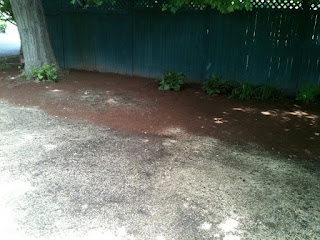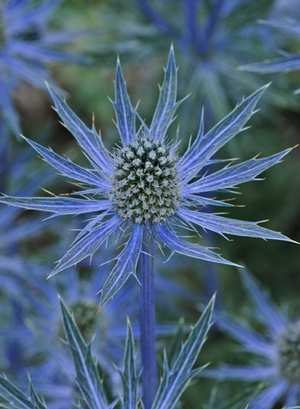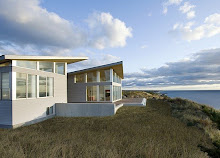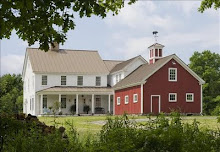Capture a bit of that vacation feeling every day. Photo courtesy of barefoothome.com.
What is it about vacation homes that are so appealing? For those lucky enough to own one, or even just visit, the relaxation and happiness one feels upon arriving and settling in is not just due to the escape from the daily grind. It is also because one literally lightens one's load in life - down to what fits in a suitcase - and spends their days in a simpler environment.
The good life...
This net-zero energy home in Woolwich, Maine, complete with swimming pool, was designed with family staycations in mind. Read the complete Design New England article here. Photo via ReVision Energy.
The great news is that we can bring these same sweet barefoot simplicities into our own homes for year round enjoyment. We will also save a boatload of energy and money in the process. The key is to make smart choices about where and how we live. Now, of course not all of us can afford to live by the beach. But here are some things we can all do:
- Live near town, where we can enjoy the walking lifestyle and leave the car in park.
- Declutter our homes down to just the essentials, and support charities with our donations.
- Create strong indoor/outdoor connections. Forget the AC and throw the windows open. Use the same durable and natural flooring materials inside and out.
- Flood our homes with sunshine by stacking back the draperies during the day and leaving the light switches off.
- Dress down - skip the formal dining room and turn the space into a casual destination where everyone can eat comfortably, or where shelves of books encourage you to slow down and read.
- Live smaller. Vacation homes are usually charming and inviting because they are cozy. Downsize to a home that is easy to keep, and only has spaces that you use every day. You might even find that you can live in locales you never thought you could afford.
In his book The Barefoot Home: Dressed-Down Design for Casual Living, Mark Vassallo reminds us of the many ways we can "staycation" every day.
This 388 s.f. Beach Chalet, designed by StudioMama pares down the classic shingled beach house to the bare essentials. Photo via Jaunted.com.
The best aspect of THE CONCORD GREEN HEALTHY HOME may not even be the home itself, but what is across the street. Emerson Field offers an expansive view of tennis courts, baseball fields, a running track, playground equipment, basketball courts, swimming pool, lots of large shady trees and pesticide-free grass, all within a 1/4 mile walk to town center.























































